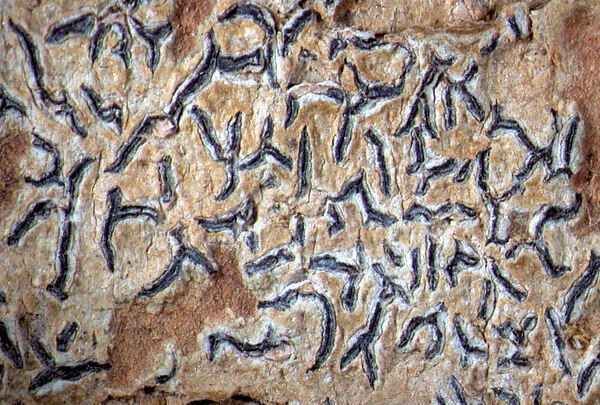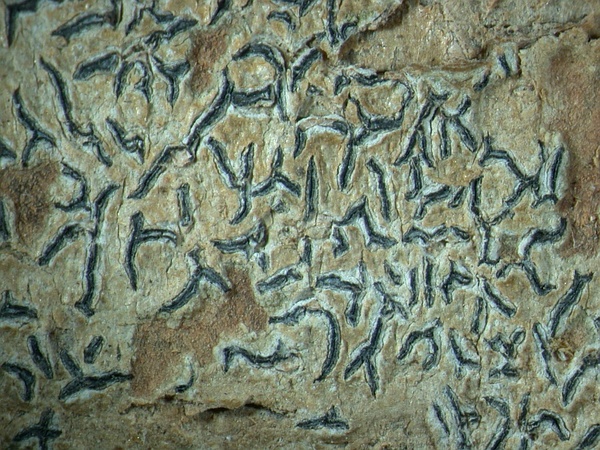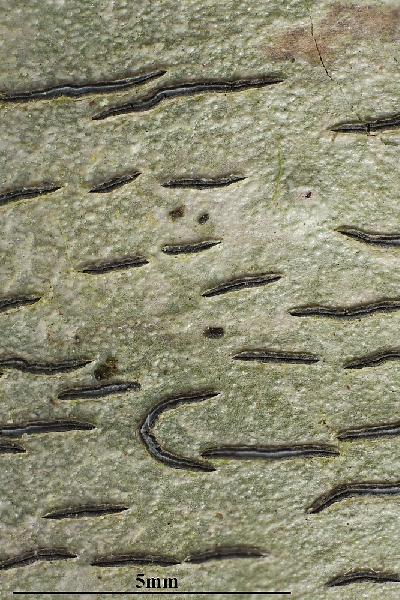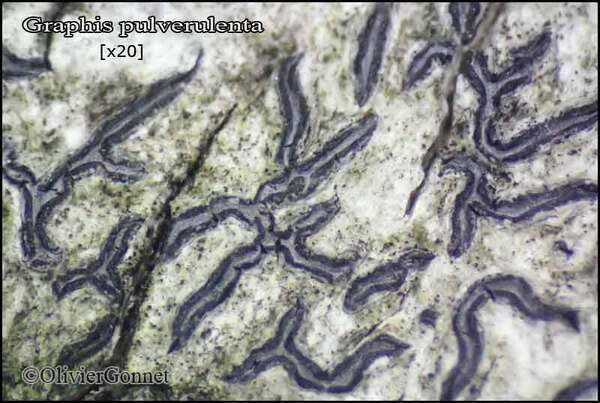Graphis pulverulenta (Pers.) Ach.
K. Vetensk.-Akad. Nya Handl., 30: 146, 1809. Basionym: Opegrapha pulverulenta Pers. - Ann. Bot. (Usteri), 7: 29, 1794.
Synonyms: Graphis abietina (Schaer.) Malbr.; Graphis cerasi (Pers.) Ach.; Graphis diffracta Turner ex Leight.; Graphis serpentina (Ach.) Ach.; Graphis subtilis (Pers.) Röhl.; Lichen serpentinus Ach.; Opegrapha cerasi Pers.; Opegrapha glaucoma Chevall.; Opegrapha literella (Ach.) Schumach.; Opegrapha scripta var. abietina Schaer.; Opegrapha scripta var. subtilis Pers.; Opegrapha serpentina (Ach.) Schrad.
Distribution: N - Frl (Neuwirth & Aptroot 2011), Ven (Ravera & al. 2019b), TAA (Neuwirth & Aptroot 2011, Nascimbene & al. 2022), Lomb (Neuwirth & Aptroot 2011, Gheza & al. 2022b, 2023), Piem (Jatta 1909-1911). C - Umb (Ravera & al. 2022b), Laz (Ravera & al. 2022b), Mol (Ravera & al. 2022b). S - Pugl (Neuwirth & Aptroot 2011).
Description: Thallus crustose, continuous to finely rimose around the apothecia, white, pale grey or pale yellowish brown, dull, often delimited by a black prothallus. Apothecia lirelliform, black, raised, oblong to linear, more or less flexuose and branched, often stellate, pointed at ends, 2-10 x 0.15-0.4 mm, with a finally expanded, often grey- to white-pruinose disc, and a up to 10 µm thick proper margin with entire lips; pseudothalline margin absent. Proper exciple black and carbonized laterally, poorly developed and not carbonized at base; epithecium brown; hymenium colourless, not inspersed with oil droplets; paraphyses simple, dense, 1.5-2 µm thick, with brownish tips; subhymenium colourless. Asci 8-spored, cylindrical-clavate, non fissitunicate, dehiscent by an apical split, K/I-, Graphis-type. Ascospores 7-12(-14)-septate with lens-shaped lumina, hyaline, slightly constricted at septa, fusiform-cylindrical, 15-56 x 5-12 µm, the wall I+ blue-violet. Photobiont trentepohlioid. Spot tests: thallus K-, C-, KC-, P-. Chemistry: without lichen substances.
Note: a taxon of the G. scripta-group, characterised by apothecia with mostly acute ends and widely exposed white to grey pruinose discs, found on the bark of broad-leaved trees in various forest types. See also comment on the genus.
Growth form: Crustose
Substrata: bark
Photobiont: Trentepohlia
Reproductive strategy: mainly sexual
Commonnes-rarity: (info)
Alpine belt: absent
Subalpine belt: absent
Oromediterranean belt: absent
Montane belt: rather common
Submediterranean belt: rare
Padanian area: absent
Humid submediterranean belt: rather rare
Humid mediterranean belt: very rare
Dry mediterranean belt: absent
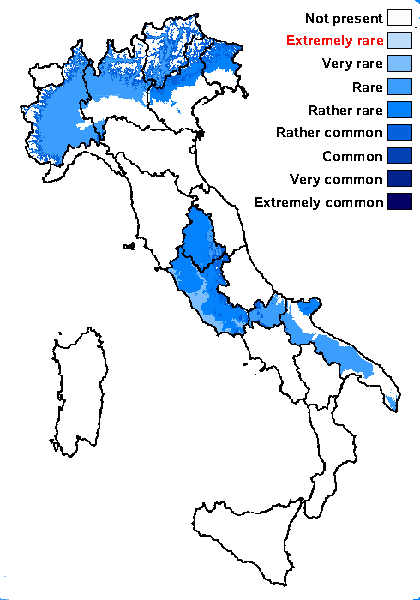
Predictive model
Herbarium samples

Ulrich Kirschbaum CC BY-SA 4.0 - Source: https://www.thm.de/lse/ulrich-kirschbaum/flechtenbilder
Central Europe; Germany; Bavaria: Alps. (Collected by B. Jessel).
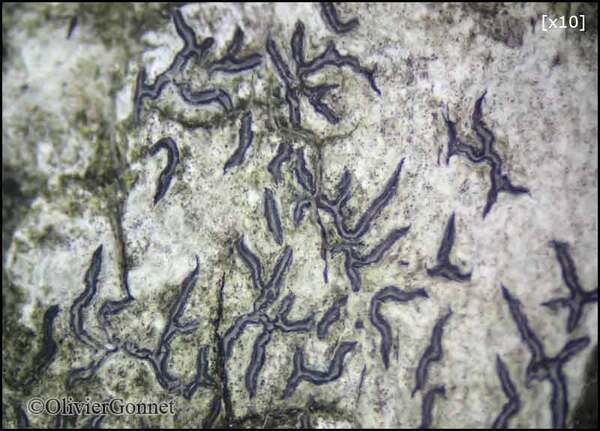
Courtesy Danièle et Olivier Gonnet - Source: https://www.afl-lichenologie.fr/Photos_AFL/Photos_AFL_G/Graphis_pulverulenta.htm
France, Sur piquet en châtaignier - Ajaccio - Corse
18/10/2018
Growth form: Crustose
Substrata: bark
Photobiont: Trentepohlia
Reproductive strategy: mainly sexual
Commonnes-rarity: (info)
Alpine belt: absent
Subalpine belt: absent
Oromediterranean belt: absent
Montane belt: rather common
Submediterranean belt: rare
Padanian area: absent
Humid submediterranean belt: rather rare
Humid mediterranean belt: very rare
Dry mediterranean belt: absent

Predictive model
| Herbarium samples |

Ulrich Kirschbaum CC BY-SA 4.0 - Source: https://www.thm.de/lse/ulrich-kirschbaum/flechtenbilder
Central Europe; Germany; Bavaria: Alps. (Collected by B. Jessel).

 Index Fungorum
Index Fungorum
 GBIF
GBIF
